#famous american photographer landscapes
Explore tagged Tumblr posts
Text
Through the Lens: Iconic Photographers Who Shaped the Art of Photography
Photography is much more than capturing a moment; it is a powerful medium of storytelling, emotion, and expression. Over the years, countless photographers have left indelible marks on the art form, shaping how we view the world through their lenses. This article explores some of the most iconic photographers and their contributions to the ever-evolving field of photography. Henri…
#A Visionary in Japanese Photography#Annie Leibovitz#Annie Leibovitz: The Portraitist of Legends#AnnieLeibovit#Ansel Adams#Ansel Adams: The Poet of the American Landscape#AnselAdamsPhotography#ArtOfPhotography#book-review#books#CindySherman#ClassicPhotography#CreativePhotography#Daido Moriyama#Daido Moriyama: The Gritty Chronicler of Urban Chaos#DaidoMoriyama#DocumentaryPhotography#Dorothea Lange#Dorothea Lange: Humanizing the Great Depression#DorotheaLange#famous photographer#FamousPhotographers#fiction#FineArtPhotography#GlobalPhotography#Henri Cartier-Bresson#Henri Cartier-Bresson: The Master of the Decisive Moment#HenriCartierBresson#Humanizing the Great Depression#Iconic
1 note
·
View note
Note
You said you love a good fashion doc- do you have any more to recommend?
Designers and tastemakers
Very Ralph (2019). The preeminent American designer of our time, one of the very few who can stand toe to toe with the titans of Paris and Milan. To call Ralph Lauren's work "sportswear" is to call the Sistine Chapel "kind of a big painting".
Halston (2019). Speaking of going head to head with Paris, Halston did it first. Skip Ultrasuede-- this is a much better doc about the king of American 70s disco glam.
McQueen (2018). When people talk about fashion as an art form, chances are they're thinking of Alexander McQueen. Worth watching for the pulse-pounding runway shows alone.
Westwood: Punk, Icon, Activist (2018). Obviously you already know about this one, but it's gotta go on any comprehensive list. Without Vivienne Westwood, punk would have been nothing but a handful of noisy assholes.
Diana Vreeland: The Eye Has to Travel (2011). My icon, my north star, my personal hero. The empress of taste and high priestess of personal style. Watch this doc whenever you need encouragement to do and wear whatever the hell you want.
The Gospel According to André (2017). Diana Vreeland's protegé and a godfather of style in his own right. If it happened in fashion in the last fifty years, André Leon Talley was there for it.
Lagerfeld Confidential (2007). I have a high tolerance for difficult and unpleasant people as long as I like their work. Your mileage may vary, but Karl Lagerfeld's immaculate, relentless taste cannot be denied.
Institutions and events
The First Monday in May (2016). Witness all the hustle, bustle, savvy, and stress that goes into planning the Met gala!
The September Issue (2009). Same as the above, but for the famous September issue of Vogue. Watch this to learn who Grace Coddington is.
Dior and I (2014). How do haute couture collections get made? In 8 weeks from start to finish, I guess, if you're Raf Simons during his first season at the House of Dior. A documentary and a thriller.
Scatter My Ashes at Bergdorf's (2013). No matter what other retailers might want you to think, Bergdorf Goodman is the last great department store. A portrait, already halfway to a time capsule, of what luxury shopping used to be.
Peripheral, but may be of interest
Nose (2021). The passionate, delicate art of perfume creation for the House of Dior. The French landscapes where they source their materials will make you swoon.
Larger Than Life: The Kevyn Aucoin Story (2017). As the makeup artist to pretty much every single icon of the 80s and 90s, Kevyn Aucoin invented the image of that era as much as any designer.
Fabergé: A Life of Its Own (2014). Come for the dazzling jewels and sumptuous objets d'art; stay to find out how this illustrious name ended up on hair care products in the 70s.
Crazy About Tiffany's (2016). Another luxury jeweler whose name alone is the stuff dreams are made on.
Bill Cunningham New York (2010). The original street style photographer, since before "street style" was even a thing. A love letter to curiosity, and a testament to the power of taking an interest in the world around us.
Still on my watchlist
Salvatore: Shoemaker of Dreams (2020). Directed by Luca Guadagnino, which is enough to put this Ferragamo doc at the top of my list.
Advanced Style (2014). Portraits of seven women aged 62-95 with truly fab personal style. Top Letterboxd review is seething about how out of touch they are with the real world, which means I am probably gonna love it.
Suited (2016). A study of gender through clothing in modern culture.
Dries (2017). A year-- and four collections-- in the life of Dries Van Noten, who, interestingly, doesn't see the point of clothes that people can't buy to wear, and so does not do couture.
Yellow is Forbidden (2018). This doc about Guo Pei appears to use her career as a framework to understand the gatekeeping of global culture by the West. Dope as hell, if it can pull it off.
American Style (2019). The political, social, and economic history of America through its fashion. Another one that could be really awesome if done with insight and panache.
Quant (2021). She may share the credit for inventing the miniskirt with two other people, but it cannot be argued that Mary Quant invented 1960s Swinging London. And for that we say thank you Dame Mary.
#fashion#documentaries#film#this made me realize how broad of a category i consider fashion to be#joan didion? art forgery? the history of scotch? this too is style#nearly tossed a studio 54 doc on this list before remembering that it wasn't all that good#forthegothicheroine#questions queries quandaries
429 notes
·
View notes
Text
Frontier myth vilified the California grizzly. Science tells a new story. (Washington Post)
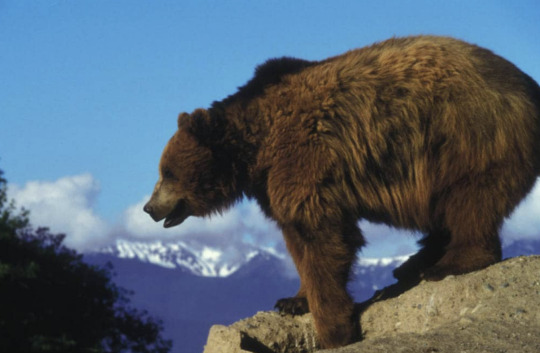
The grizzly, a subspecies of brown bear, has long held a place in mainstream American myth as a dangerous, even bloodthirsty creature. Its scientific name, Ursus arctos horribilis, means “the horrible bear.” But that image is being challenged by a new set of studies that combine modern biochemical analysis, historical research and Indigenous knowledge to bring the story of the California grizzly from fiction to fact.
In January, a team of experts led by University of California at Santa Barbara ecologist Alexis Mychajliw published a paper in the Proceedings of the Royal Society B about the diet of the California grizzly bear and how that influenced its extinction. The results challenge virtually every aspect of the bear’s established story.
“Pretty much everything that I thought I knew about these animals turned out to be wrong,” said Peter Alagona, an ecologist and historian at UCSB and co-author of the study.
Much of the grizzly bear’s long-standing narrative comes from stories, artwork and early photographs depicting California grizzlies as huge in size and aggressive in nature. Many of these reports, which found wide readership in newspapers elsewhere in the West and in the cities back East, were written by what Alagona calls the Californian influencers of their time.
“They were trying to get rich and famous by marketing themselves as these icons of the fading frontier,” Alagona said. “A lot of the historical sources that we have about grizzlies are actually not about grizzlies. They’re about this weird Victorian 19th-century celebrity culture.”
The team of ecologists, historians and archivists compared the image of California grizzlies from these frontier reports to harder data in the form of bear bones from museum collections all over the state.
The frontier myth had painted the California bears as larger than grizzlies elsewhere in the country, but the bone analysis revealed that they were the same size and weight, about 6 feet long and 440 pounds for the average adult.
In an even larger blow to the popular story of the vicious grizzly, the bones showed that before 1542, when the first Europeans arrived, the bears were only getting about 10 percent of their diet from preying on land animals. They were primarily herbivores, surviving on a varied diet of acorns, roots, berries, fish and occasionally larger prey such as deer.
As European-style farming and ranching began to dominate the landscape, grizzlies became more like the stories those frontier influencers were telling about them. The percentage of meat in their diet rose to about 25 percent, probably in large part because of the relative ease of catching a fenced-in cow or sheep compared to a wild elk.
Colonialism forced so many changes on the California landscape so quickly, affecting every species that the bears ate and interacted with, that the exact cause of this change will be difficult to ever fully understand.
Still, grizzlies were never as vicious or purely predatory as the stories made them out to be. The narrative of the huge killer bear instead fed a larger settler story of a landscape — and a people — that could not coexist with the settlers themselves. And that story became a disaster for more than just bears.
Although we will never have exact numbers, experts agree that hundreds of thousands of Indigenous people were living in what is now California before White settlers arrived. One frequently cited estimate puts the population at 340,000.
By 1900, that number had been slashed by more than 95 percent to around 16,000 surviving tribal members throughout the state. Eliminating the bear and the vast majority of California’s Indigenous people can be seen as parts of the same concerted effort to replace one landscape — and one set of stories — with another.
“The annihilation of the California grizzly bear was part of a much larger campaign of annihilation,” Alagona said. “I think it’s clear that what happened in California meets the legal definition of a genocide. But in a way, it was even more than that, because these were not just attempts to eliminate groups of people. These were attempts to destroy an entire world.”
187 notes
·
View notes
Text

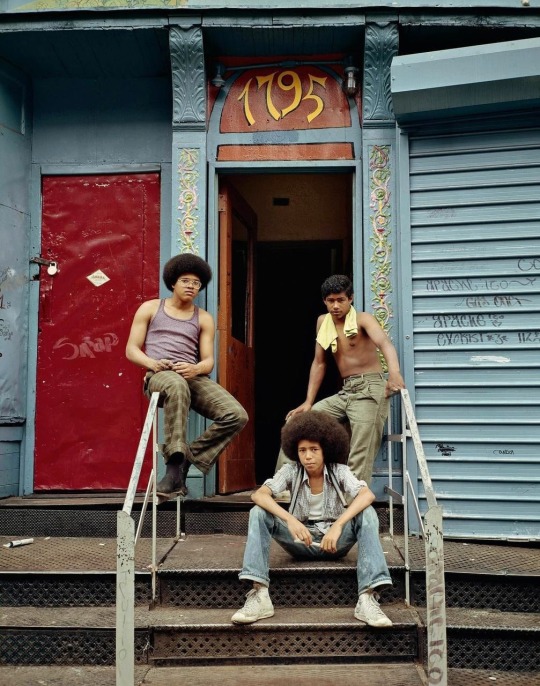
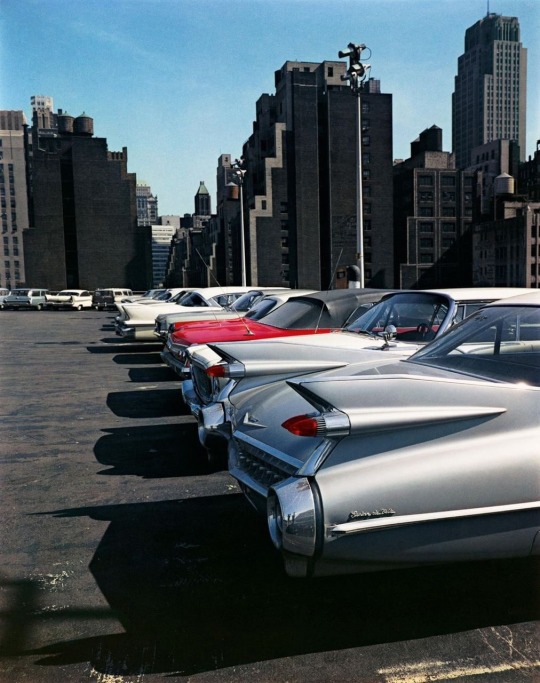
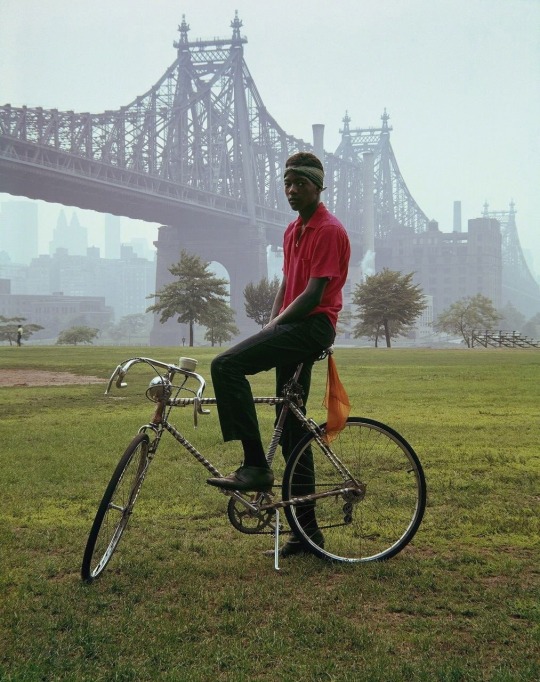
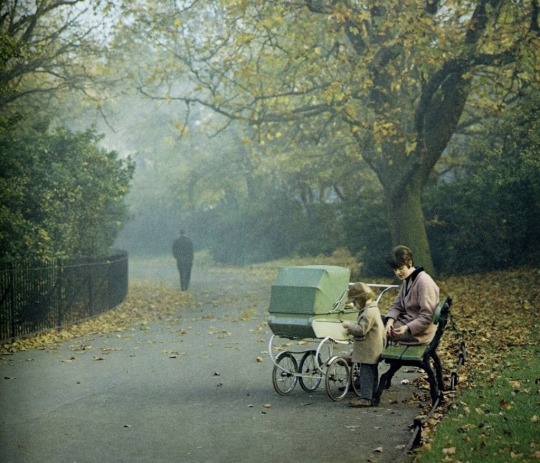


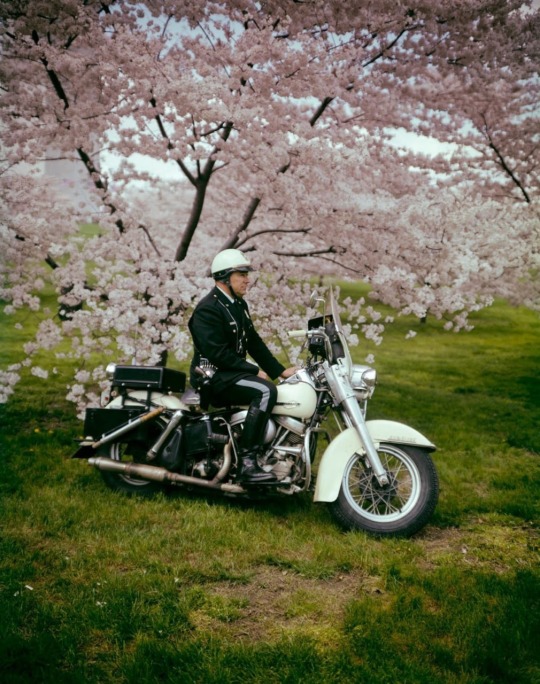
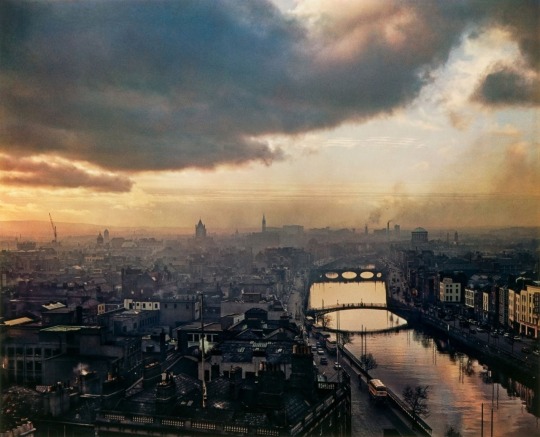
𝙻 𝚘 𝚟 𝚎 📷
New York and London 60-80s in the photo by Evelyn Hofer 🇺🇸 🇬🇧
Evelyn Hofer (* January 21, 1922, Marburg an der Lahn; † November 2, 2009 in Mexico City) was a photographer of German descent who later took on Mexican and American citizenship. Over decades, Hofer created a body of work that independently developed the tradition of August Sander's conception of images and also used color photography early on. Hilton Kramer, art critic for the New York Times, called Hofer "America's most famous 'unknown' photographer."
#photography #photooftheday #photo #photographer #photoshoot #nature #picoftheday #love #naturephotography #travel #photographylovers #beautiful #travelphotography #art #landscape #godsowncountry #portrait #photos #portraitphotography
Matter of Time by Sharon Jones & The Dap-Kings 🎧
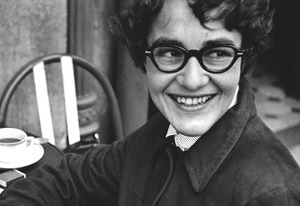
#l o v e#post of the day#evelyn hofer#soul photography#5/2024#female artists#photographer#color photography#vintage#1960s#1980s#nostalgia#underrated#passion#photography#citizenship#marburg#new york#London#culture#sub culture#aesthetic#storytellers#photo jouralism#x-heesy#now playing#music and art#contemporaryart#1970s#📷
142 notes
·
View notes
Text

Westward Expansion: From Prairie to Paper
Niamh Creighton
This exhibition is a visual journey through the movement west that resculpted American culture and landscape. It captures how the rolling plains, once empty and expansive, were affected and changed through this journey, and reflects the power of paper, used for art, treaties, propaganda, and numerous other concepts that have helped to transform the west.
There are older works of art included in this exhibition, as well as newer works. Through the curation of photography, paintings, and sculpture, “Westward Expansion: From Prairie to Paper”examines the two different accounts of this expansion period. From one angle, the adventure, opportunity, and motivation that pioneers found on their journey west, and from another angle, the disruption of native american culture and land, and the environmental and economic exploitation that has happened as a result of that.
“The Last Shot” by Arthur Fitzwilliam Tait and the photograph by Karen Halverson titled “Near Keeler, California”, were both included to represent the second half of those two accounts. The photograph is exemplar of how the landscape has changed and been affected by this movement. At the front and center is a bright orange plastic fence, and we can see power lines being stretched across the left side of the photo. These objects are not pretty, and certainly not natural to the landscape. The painting is an example of the differences in cultures that were happening, as well as showing the landscape off.
The other works in this showcase have been included for the first viewpoint of this time period and place. “American Progress” is one of the most famous, if not the most famous artworks about the westward expansion, however it is a very eurocentric view of this happening. “Manifest Destiny” is another painting showing this eurocentric view of the movement west. It portrays a young girl looking out of an airplane window out at a mountain range. You can really feel the hopefulness and sense of opportunity in this work. And last but not least, the sculpture “Blue cowboy #2” demonstrates how the midwestern American culture has become very recognizable and established.
Viewers are encouraged to think about the complexities of this expansion and acknowledge the change and the unique culture of the American midwest.
2 notes
·
View notes
Text










Galleta Meadows Sculptures is an outdoor sculpture park located in Borrego Springs, California.
This unique site features over 130 metal sculptures scattered across the desert landscape.
The sculptures at Galleta Meadows were commissioned by Dennis Avery, the heir to the Avery label fortune.
Avery, a philanthropist and art enthusiast, owned the Galleta Meadows Estate and envisioned creating a space where art and nature could coexist.
He commissioned Ricardo Breceda, a self-taught sculptor from Mexico, to create the metal artworks.
Breceda started working on the project in 2008, and the sculptures were installed over several years, turning the desert into an open-air gallery.
Galleta Meadows is located in Borrego Springs, a small desert town in Southern California, about 90 miles northeast of San Diego.
The sculptures are dispersed throughout the private lands of Galleta Meadows Estates, spread across thousands of acres.
They are publicly accessible and situated along Borrego Springs Road and other nearby routes.
Visitors can drive or walk around the sculptures, making it a popular destination for tourists, photographers, and nature enthusiasts.
The sculptures at Galleta Meadows vary widely in size and subject matter, ranging from life-sized to monumental. Some of the notable pieces include:
The Serpent (Sea Dragon): One of the most famous sculptures, this creature appears to weave in and out of the sand, with a length of over 350 feet.
Prehistoric Animals: Including mammoths, saber-toothed cats, and sloths, these sculptures are life-sized representations of creatures that once roamed the area.
Dinosaurs: Several sculptures depict dinosaurs, such as the Tyrannosaurus rex and Velociraptor, adding a fantastical element to the desert landscape.
Historical and Cultural Figures: These sculptures depict historical figures like Spanish explorers, Native American warriors, and gold miners, reflecting the region's rich history.
The sculptures are made from welded steel and have been designed to withstand the harsh desert environment, withstanding both heat and wind.
Many of them are intricate, with detailed textures and designs that capture the imagination of viewers.
The Galleta Meadows Sculptures have had a significant impact on the Borrego Springs community and beyond:
The sculptures have turned Borrego Springs into a cultural and tourist destination, drawing visitors from around the world.
This influx of tourists has bolstered the local economy, benefiting hotels, restaurants, and shops.
Some of the sculptures depict historical and cultural figures significant to the area, serving as a form of cultural preservation and education.
They help tell the story of the region's history, from prehistoric times to modern-day, enhancing cultural awareness and appreciation.
The site demonstrates how art can be integrated into natural landscapes in a way that complements rather than disrupts the environment.
This has inspired similar projects elsewhere and encouraged a broader appreciation for outdoor art installations.
The sculptures have fostered a sense of community pride and engagement.
Locals often volunteer to help maintain the area and guide visitors, reflecting a strong community connection to the sculptures.
By situating these sculptures in a natural setting, Galleta Meadows has increased awareness about the desert environment and its preservation.
The art installations highlight the stark beauty of the desert, encouraging a greater appreciation for the landscape and its unique ecosystem.
Overall, Galleta Meadows Sculptures is a unique fusion of art, history, and nature, creating a cultural landmark that has enriched both the local community and the wider public.
2 notes
·
View notes
Text
'70s Harajuku (Part 1)
The Harajuku district in Shibuya has gained international acclaim as a hub of Tokyo's youth culture and fashion scene. Its streets are lined with cafes, boutiques, and well-known fast fashion stores, drawing a constant stream of tourists, fashionistas, and teenagers. However, before the arrival of billionaire retailers, foreigners, and media attention, this area's early inhabitants were the ones who truly shaped its unique character.

Several factors contributed to Harajuku evolving into a valuable and fashionable destination. Firstly, its location, accessible via the Yamanote Line and situated within the Shibuya ward, played a pivotal role. The vicinity surrounding Shibuya Station, located about 1.3 km north, has been a focal point for youth culture since the 1950s. Moreover, Minato-Aoyama, which borders Omotesando Avenue, has been developed as a fashionable place since VAN made it a hub for Ivy fashion, scattering its boutiques and facilities around the area in the '60s.
Another noteworthy aspect is the absence of certain establishments like sex shops, dingy bars, pachinko parlors, cabaret clubs, and love hotels. This is due to the city's designation of the area as an Education District, owing to the presence of the Jingumae Elementary School. Consequently, Harajuku maintains a safer and considerably less seedy atmosphere than other popular fashion and entertainment districts like Shinjuku, Ikebukuro, and the central part of Shibuya.
Despite this, Harajuku didn't become a famous, trendy area overnight. For decades, the district remained a quiet residential neighborhood with minimal activity, except for the annual influx of New Year's Day visitors who assembled at the Meiji Shrine. Yet, one distinguishing feature would set it apart: its international vibe.
In 1947, the construction of the Washington Heights complex, a vast housing facility for the US Armed Forces, transformed the landscape, prompting the emergence of local shops catering to international families, exemplified by the enduring Kiddy Land toy store. Kiddy Land, which still thrives today, became a beloved destination for the children of American soldiers and was the first shop in Japan to offer Barbie dolls.

Route 5, the fashionable drive-in eatery, photographed in 1965.
In 1964, Japanese authorities took back control of the land occupied by Washington Heights. The government repurposed the area and built Olympic facilities and athlete accommodations, further fueling investments in Harajuku. By 1966, the local nightlife began flourishing, primarily due to affluent teenagers cruising the streets in flashy American sports cars. They were drawn to cosmopolitan restaurants that kept their doors open late into the night, with Route 5, a drive-in eatery, being a notable hotspot. Right across the street from Route 5 stood an Adventist church, contributing to the area's foreign allure.
Around that time, Harajuku garnered significant media attention with the completion of Olympia Co-Op, Japan's first luxury condominium development. But it was another residential building that shaped Harajuku's spirit...
Harajuku Central Apartments
Occupations like stylist, copywriter, designer, fashion photographer, and illustrator didn't gain recognition until the post-war period. They were referred to as the "katakana professions" due to their foreign origin and the fact their Japanese translations are loanwords, usually written in the Katakana syllabary. It wasn't until the 1980s, thanks to articles in magazines like AnAn and other fashion publications, that these professions became widely known among the Japanese public. However, starting in the '60s, more than a decade before becoming widespread, these creative individuals—already molding Japanese pop culture, fashion, and advertising—gathered in the Harajuku Central Apartments opposite the Jingumae crossing.
Central Apartments featured seven floors that accommodated offices, boutiques, and a café. The café that occupied part of the ground floor, Leon, achieved legendary status and was immortalized in fashion magazines as a meeting place for Japan's creative elite.

Harajuku Central Apartments photographed in 1980.
With the launch of magazines like AnAn, Non-no, and Popeye, which reported on Tokyo's fashionable districts, boutiques, and individuals, Harajuku gained recognition among trend-conscious individuals across Japan, and so did Leon, the trendiest coffee shop in Harajuku.
Unlike Chianti, the upscale Italian restaurant frequented by celebrities in the posh Nishiazabu area, Leon was accessible, unpretentious, and affordable. In fact, you could enjoy multiple cups of coffee for a fixed price, a rarity in Tokyo at the time. Nevertheless, its reputation as the haunt of Harajuku's most notable professionals made it an intimidating spot where few dared to venture.
The recurring theme in stories from young visitors to the area was, "I was just a kid from the countryside; there was no way I could summon the courage to enter." Even Tokyoites who weren't part of the inner circle kept their distance. However, Leon's large glass windows attracted the attention of passersby, who craned their necks and tried to catch a glimpse of celebrities and industry figures featured in magazines and on TV.

“LEON” in Harajuku/1972/Mike Nogami
Inside Leon, despite its no-frills décor and menu, it felt like entering a new world where only the most stylish individuals were welcomed. Everyone in the café dressed in the latest European and American fashion trends, and the music playing was the latest hits from London, New York City, or California. Since the café also served as an office for its customers, you could overhear Japan's most prominent fashion, music, and advertising professionals openly discussing their latest projects and loudly taking calls on the venue's pink telephone.
While the coffee shop served as Central Apartment's meeting place, it wasn't its only commercial facility. Harajuku's first boutique, Madame Nonnon, by legendary designer Taro Aramaki, opened in the building in 1964. It sold casual Parisian fashion, and its border (stripped) shirts were a big trend. (Even today, striped shirts remain a cherished staple of Parisian casual style in Japan, with trend-conscious women often sourcing them from the British brand St. James.).
Madame Nonnon, considered by many as Japan's first boutique, shaped the exclusive aura of Central Apartments. Taro Aramaki was discerning in his clientele, only selling to those who matched the store's style. Prices were exceedingly high, and except for the striped shirts and a few select items, everything was either tailor-made or imported directly from Paris. Additionally, sizing was limited to XS, adding to the exclusivity.
Later, other retailers started occupying space in Harajuku Central Apartments, and the basement floor became a small shopping mall with stalls selling food and fashion items. But the biggest success story emerging out of the Central Apartments' shops is probably MILK.

The entrance of MILK's first boutique (left) and a glimpse inside Mademoiselle Nonnon, including its iconic border pieces, as part of an AnAn 1972 editorial (top right).
Under the direction of Hitomi Okawa, MILK initially sold women's clothes, mixing playfulness with the London punk aesthetic admired by the young designer. Eventually, the brand became a staple of Harajuku kawaii fashion with its girly designs and celebrity admirers. MILK influenced the rise of fashion tribes like the Gothic Lolitas and gained prominence, expanding nationwide. A men's line, MILKBOY, was launched in 1975.
MILK's flagship store is still in Harajuku, but not at Central Apartments. As a testament to how much the area has evolved and how things have drastically changed, the building met its demise in 1998. The place is now the site of the Tokyu Plaza shopping center. However, Harajuku owes a lot of its fashionable, creative cred to the existence of the legendary building, which brought some of the most avant-garde professionals to the area.
The Evolution of Harajuku
Harajuku has become so renowned that every facet of the district is well-known. There's Ura-Harajuku, the charming backstreets teeming with cafes and independent shops. There's the heart of Harajuku itself, which typically includes Cat Street and Takeshita Dori—lively thoroughfares packed with stores and food stalls catering to teenagers. You'll also find the bustling Meiji Dori and the iconic Jingumae Crossing, which doubles as the intersection of Omotesando. And, of course, there's Omotesando itself, the grand avenue lined with zelkova trees, home to the flagship stores of luxury brands that extend from the Meiji Shrine to the entrance of the stylish and equally lavish Aoyama-dori in the Minato ward.
In the '60s, however, there was no Ura-Harajuku, and Omotesando was just a tranquil and beautiful avenue with almost no buildings. Harajuku was a quiet, relaxing area of central Tokyo, catering mainly to its residents. While a few trend-savvy people gravitated towards the area due to its cosmopolitan air, it was a well-kept secret among them.
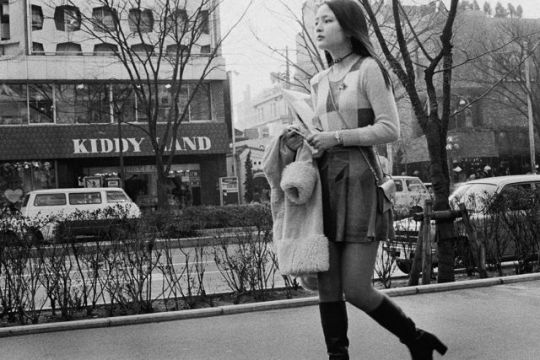
A fashionable girl walks in front of the Kiddy Land toy shop in Harajuku Kiddy Land in 1974/Alao Yokogi.
However, as the 1970s rolled in, AnAn magazine changed everything. The magazine frequently featured Harajuku alongside well-known Tokyo districts like Shibuya, Shinjuku, and Ginza. During this era, Harajuku hadn't yet embraced the youthful, inclusive vibrancy it enjoys today. Instead, it was an elegant adult enclave characterized by its upscale, intimidating boutiques, the accomplished creative professionals at Central Apartment, and the opulent Co-op Olympia and its wealthy residents.
After Mademoiselle Non-non, a wave of boutiques began to emerge. Model Mako opened the trendy MAKO BIS. London underground fashion, favored by the style-savvy, was available at Help and Suzuroku. Meanwhile, for those who preferred folk and boho-inspired garments, also trendy at the time, there was Violon and Hitotsume Kozou.
In 1970, BIGI, a women's ready-to-wear clothing brand founded by the husband and wife team of Takeo Kikuchi and Yoshie Inaba, opened its first store in Harajuku. Three years later, Rei Kawakubo inaugurated the first boutique of her now internationally renowned label, COMME des GARÇONS, in the same area. BIGI and COMME des GARÇONS, along with other brands created by emerging Japanese designers, set off the "DC Brand Boom," which would shape the domestic fashion scene in the following decade, a theme we will revisit later.
BEAMS, now one of Japan's largest retailers with stores nationwide, started in Harajuku in 1976 as a modest import store modeled after a UCLA dorm room. It quickly drew crowds searching for American brands featured in the MADE IN USA Catalog and Popeye magazine. During the same year, teenagers flocked to the neighborhood to shop at Cream Soda, a second-hand boutique known for its '50s-inspired rockabilly fashion, sparking a youth fashion craze. By 1977, a significant portion of Harajuku had been closed to vehicular traffic, transforming the area into what the Japanese refer to as a "pedestrian paradise." Stylish young people began congregating in the area to dance and flaunt their eye-catching outfits, mostly bought from the local Boutique Takenoko.
In 1978, a fashion building aimed at the youth market, LaForet Harajuku, opened at the Jingumae Crossing, just across from the Central Apartments. LaForet quickly gained fame as one of Tokyo's premier shopping destinations and continues to be a beloved fixture in the area today. Harajuku's transformation into a central hub for fashion was complete.
'70s Harajuku (Part 2)
3 notes
·
View notes
Text
Nature’s Brilliance through Diamond Painting: Albert Bierstadt, Lofoten Norsk, and Seljalandsfoss Waterfall
Bierstadt was a popular German-American painter of his day. He was a master at showing America's western frontier's majesty, drama, and magnificence. His paintings were rich in depth and grandeur, representing the incredible Rocky Mountains, the Sierra Nevada Mountains, and much more. Albert Bierstadt diamond painting gives art followers an original connection to these old masterpieces.
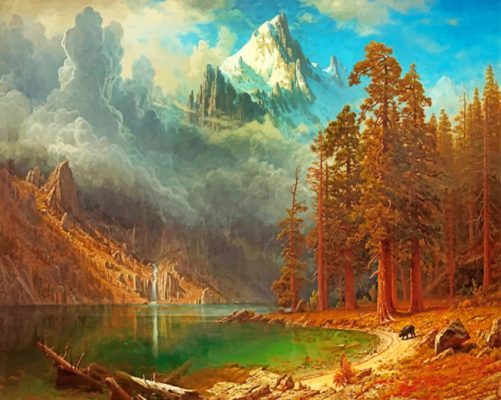
The Lofoten Islands are a group of islands located above Norway's Arctic zone. From the majestic peaks to the breathtakingly deep blue waters of the fjords, it's a region of extraordinary beauty. It's no wonder that the beauty of these islands has inspired so many painters and photographers. Check out the gorgeous Lofoten Norsk diamond painting if you're a design enthusiast looking for a novel way to take in the power of Norway's beautiful landscapes. You'll feel an intense attachment to the untouched beauty of Lofoten thanks to its careful management.
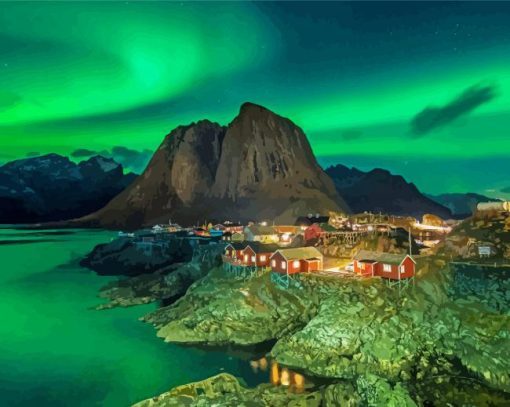
The Seljalandfoss Waterfall is one of Iceland's most famous and stunning landscapes. It has long been a popular destination for tourists, photographers, and environmental lovers. It is a marvel to behold, with its flowing waters and the capacity to take a walk behind the waterfall. If you're looking for an original way to capture the stunning beauty of this wonderful area, you've found the perfect spot. The Seljaland Falls Waterfall diamond painting is fantastic for people who wish to effectively portray the magic of this outstanding vision.

The brightness of diamond art painting kits allows artists to express the majesty of nature with a splendor that would be difficult to create with ordinary materials. The shining beads bring the photos to life, whether it's Bierstadt's vibrant landscapes, Lofoten's ethereal light, or the flowing Seljalands-foss.
2 notes
·
View notes
Text
Sally Mann's Disturbing Photographs: The Immediate Family
Sally Mann is a known photographer born and raised in the south of the United States in Lexington, Virginia, which she describes as “being nourished and wounded by the experience” (Widewalls, 2023). One of her major photography works that caused controversy is her work on family portraits titled “Immediate Family,” where she published a series of intimate photographs of her three children, Emmett, Jessie, and Virginia, taken between 1984 and 1991.

The canon of the photo series is similar to the work of Edward Weston and Margret Cameron (Publicdelivery, 2019). The book produced in 1992 by Saly Mann triggered controversy because it exposes the intimacy around children, conveying sensual beauty and grains of discomfort and violence (Widewalls, 2023). One of the famous photos is of one of her female kids lying naked after wetting the bed. Another one is of Jessie in a white dress holding a cigarette.


Critics accused Sally Mann of sexualizing her children and breaking their privacy, especially since they are underage and not mature enough to be fully aware of their consent. Even a group called “Save The Children” organized a book burning and considered the book a form of child pornography. Still, Sally Mann’s response described back then children's sexuality as an “Oxymoron” (Publicdelivery, 2019). Sally Mann’s point was to raise awareness and tell the public about the overlooked details of motherhood that are not flattering in many cases and let her children act and have a say in ways perceived as taboo, unorthodox, and adult-exclusive by society.
Sally Mann’s photos raise questions about the ethical limitations of photographs and what it takes to take intimate photos of kids. In the case of Mann, her children had agency and consent to take the photos. They even pointed out and suggested ways of taking a photograph, and they had the choice to refuse to publish some photos as they were concerned about being portrayed as “Geeks”(Publicdelivery, 2019). Although receiving lots of public hate and scrutiny, Mann’s kids were not uncomfortable with the nudity. As mentioned in the article published by Time Magazine in 1992 and during Mann’s opening in the Houk Friedman Gallery in New York, the children looked comfortable and answered guests' questions (Woodward, 1992). They were the ones who encouraged their mother to publish the book.
Despite the controversy, Sally Mann remains an accomplished photographer with several other projects. For instance, those featuring the landscape south of the American land and the former civil war battlefields (Widewalls, 2023).

References
5 most important themes in the photography of Sally Mann. Widewalls. (n.d.).
Publicdelivery. (2019, December 16). Why was Sally Mann’s immediate family so
controversial? Public Delivery – Art non-profit. https://publicdelivery.org/sally-mann-immediate-family/
Woodward, R. B. (1992, September 17). The disturbing photography of Sally
Mann. Edwynn Houk Gallery. https://www.houkgallery.com/news/187-the-disturbing-photography-of-sally-mann-sally-mann-in-the-new-york-times/
5 notes
·
View notes
Text
Extra research
Edward Henry Weston was born on March 24, 1886, and died in Chicago on January 1, 1958. He was a 20th-century American photographer. He has been referred to as one of the masters of 20th-century photography and one of the most influential and innovative American photographers. Weston photographed a wide range of photography themes throughout the course of his 40-years career. It included landscapes, still lifes, nudity, portraits, and genre settings. It is mentioned that he established a quintessentially American, especially Californian, towards modern photography due to his focus on American West’s different locations and people. In 1937, Weston was the first photographer awarded a Guggenheim Fellowship. Over the course of the following two years, he used his 8 x 10 view camera to create approximately 1,400 negatives. Some of his most famous photographs were taken at Point Lobos, California, photographing the trees and rocks near where he lived for many years. He moved to California when he was 21. His early work consisted of the soft-focus pictorialism that was popular at that time. Then, he changed his style by focusing on producing photographs with a lot of fine detail. Some of his famous photographs were Nautilus, 1927, Shell, 1927, Dunes, Oceano, 1936, Civilian Defence, 1942, Garden Chair, Autumn, 1941 and Mushroom, 1937. He was diagnosed with Parkinson's illness diagnosis in 1947, resulting in him stopping his photography career.

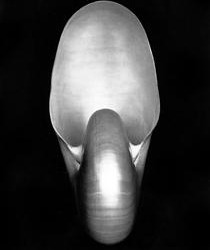
Nautilus, 1927

Dunes, Oceano, 1936
2 notes
·
View notes
Text
Fall Travel Destinations: Perfect Getaways for Autumn
Fall is one of the most enchanting times to travel, with cooler weather, colorful leaves, and unique experiences to enjoy. Whether you’re looking for a peaceful retreat in nature or a vibrant city escape, fall offers an ideal time for exploration. Here’s a list of perfect fall travel destinations and an itinerary to help you make the most of the season.
New England, USA: The Heart of Autumn
New England is renowned for its breathtaking fall foliage, making it one of the best destinations for autumn travel. From late September to early October, the region’s forests turn into a spectacular mix of red, orange, and yellow hues. A road trip through Vermont, New Hampshire, and Maine is a must to experience the full beauty of the fall season. Stop at charming small towns like Woodstock, VT, and take a hike in the White Mountains. Don’t forget to visit a cider mill and taste some fresh apple cider.
Kyoto, Japan: A Seasonal Blend of Culture and Nature
While Kyoto is famous for cherry blossoms in the spring, it is equally stunning during the fall season. The city’s temples, gardens, and parks come alive with vibrant autumn colors. Take a peaceful walk through the iconic Kiyomizu-dera Temple and its surrounding gardens, or visit the serene Arashiyama Bamboo Grove. The changing leaves at the Tofuku-ji Temple and the Eikan-do Zenrin-ji are particularly spectacular. Kyoto also offers delicious seasonal foods like roasted chestnuts and persimmons, perfect for fall.
Bavaria, Germany: Fairytale Villages and Oktoberfest
Bavaria is a magical destination in the fall, with its fairytale castles, picturesque villages, and festive atmosphere. Visit the famous Neuschwanstein Castle, surrounded by lush forests and stunning fall landscapes. In Munich, the world-famous Oktoberfest runs through late September to early October, where you can enjoy traditional German food, beer, and live music. If you’re looking for a quieter experience, head to small towns like Füssen or Garmisch-Partenkirchen, where you can enjoy hiking through the Alps amidst the autumn foliage.
Tuscany, Italy: Wine Harvest Season and Scenic Beauty
Fall is harvest season in Tuscany, making it the perfect time to visit this picturesque region. Explore the rolling hills of vineyards in Chianti, where you can participate in wine tastings and enjoy the stunning fall colors. Visit the historic cities of Florence, Pisa, and Siena, and enjoy the mild autumn weather while strolling through charming streets. Tuscany’s seasonal foods, such as truffles and roasted chestnuts, make it an ideal destination for food lovers as well.
Quebec, Canada: Vibrant Fall Foliage and French Charm
Quebec offers a perfect mix of European charm and North American autumn beauty. The city of Quebec City, with its cobblestone streets and historic architecture, is beautiful year-round, but it shines in the fall with its stunning foliage. The surrounding Laurentian Mountains offer incredible hiking trails and scenic drives through forests adorned in shades of red, orange, and yellow. Take a boat cruise along the St. Lawrence River or visit Mont-Tremblant for a cozy mountain retreat with autumn views.
Patagonia, Argentina: A Fall Adventure in the Southern Hemisphere
For those looking to experience fall in the Southern Hemisphere, Patagonia offers incredible landscapes and outdoor activities. The fall season in Patagonia (March to May) is the perfect time for hiking, as the crowds are fewer, and the weather is crisp and refreshing. Visit Torres del Paine National Park in Chile or Los Glaciares National Park in Argentina, where you’ll find majestic mountains, glaciers, and vibrant forests. This region’s fall foliage creates a dramatic contrast against the snow-capped peaks, making it a photographer’s dream.
In conclusion, fall is a season that brings unique charm to every destination. From the vibrant foliage in New England and Kyoto to the wine harvest in Tuscany and the cultural festivals in Germany, there’s something magical about traveling during autumn. Whether you prefer nature or cities, these destinations offer unforgettable fall experiences.
https://www.cvtravel.net/
0 notes
Text

Inspiring Creativity: 5 Must-Visit American Destinations for Artists on the Move
For artists, travel is more than just a change of scenery—it’s a source of inspiration, a way to break free from creative blocks, and an opportunity to see the world through a fresh lens. America, with its diverse landscapes, vibrant cities, and rich cultural heritage, offers endless possibilities for artists seeking to ignite their creativity. Whether you’re a painter, photographer, writer, or sculptor, these five destinations across the United States are sure to spark your imagination and leave you with unforgettable memories.
1. Santa Fe, New Mexico: The Heart of Southwestern Art
Nestled in the high desert of New Mexico, Santa Fe is a haven for artists. Known as the “City Different,” it boasts a unique blend of Native American, Hispanic, and Anglo cultures, creating a rich tapestry of artistic inspiration.
Why Santa Fe Inspires Artists
Historic Art Scene: Santa Fe is home to one of the oldest art markets in the country, the Santa Fe Indian Market, which showcases Native American art and craftsmanship. The city also hosts the annual Santa Fe Art Week, attracting artists and collectors from around the world.
Stunning Landscapes: The surrounding desert, with its dramatic mesas, red rock formations, and expansive skies, has inspired countless artists, including Georgia O’Keeffe, who made her home in nearby Abiquiú.
Art Galleries and Museums: Canyon Road, a historic street lined with over 100 galleries, is a must-visit for any artist. The Georgia O’Keeffe Museum and the Museum of International Folk Art are also worth exploring.
What to Do in Santa Fe
Take a plein air painting class to capture the desert’s unique light and colors.
Visit the Loretto Chapel to see its famous spiral staircase, a masterpiece of craftsmanship.
Explore the Taos Pueblo, a UNESCO World Heritage Site, to learn about Native American culture and art.
2. New York City, New York: The Epicenter of Contemporary Art
No list of artistic destinations would be complete without New York City. As the cultural capital of the world, NYC offers an unparalleled mix of museums, galleries, street art, and creative energy.
Why New York City Inspires Artists
World-Class Museums: The Metropolitan Museum of Art, the Museum of Modern Art (MoMA), and the Guggenheim are just a few of the iconic institutions that house masterpieces from every era and style.
Street Art and Graffiti: Neighborhoods like Bushwick in Brooklyn are known for their vibrant street art scene, offering a raw and dynamic form of artistic expression.
Cultural Diversity: NYC’s melting pot of cultures provides endless inspiration, from the colorful murals of Harlem to the avant-garde performances in the East Village.
What to Do in New York City
Spend a day at the Metropolitan Museum of Art, exploring its vast collection of art from around the world.
Take a walking tour of Bushwick’s street art to see works by local and international artists.
Attend a Broadway show or visit the Lincoln Center for a dose of performing arts.
3. Sedona, Arizona: A Spiritual and Artistic Retreat
Sedona, with its striking red rock formations and serene desert landscapes, is a place where art and spirituality intersect. Known for its vortex sites, which are believed to be centers of energy, Sedona has long been a destination for artists seeking inspiration and renewal.
Why Sedona Inspires Artists
Natural Beauty: The towering red rocks, lush canyons, and clear blue skies create a stunning backdrop for any artistic endeavor.
Spiritual Energy: Many artists find that Sedona’s vortex sites enhance their creativity and provide a sense of peace and clarity.
Art Galleries and Workshops: Sedona’s art scene is thriving, with numerous galleries showcasing local and regional artists. The city also offers workshops in painting, photography, and sculpture.
What to Do in Sedona
Hike the Cathedral Rock Trail for breathtaking views and a chance to experience one of Sedona’s most famous vortex sites.
Visit the Tlaquepaque Arts & Shopping Village, a charming outdoor mall filled with galleries, studios, and boutiques.
Take a photography tour to capture the desert’s unique colors and textures.
4. New Orleans, Louisiana: A Melting Pot of Music, Art, and Culture
New Orleans is a city like no other, where art, music, and culture come together in a vibrant celebration of life. From its historic architecture to its lively street performances, the Big Easy is a feast for the senses.
Why New Orleans Inspires Artists
Rich Cultural Heritage: New Orleans’ unique blend of French, Spanish, African, and Creole influences is reflected in its art, music, and cuisine.
Festivals and Events: The city is home to world-famous events like Mardi Gras and the New Orleans Jazz & Heritage Festival, which showcase its creative spirit.
Street Art and Murals: The Bywater and Marigny neighborhoods are known for their colorful murals and eclectic art scene.
What to Do in New Orleans
Explore the French Quarter, with its historic buildings, art galleries, and lively street performers.
Visit the New Orleans Museum of Art and the Ogden Museum of Southern Art to see works by local and regional artists.
Take a jazz brunch cruise on the Steamboat Natchez for a unique blend of music, food, and scenery.
5. Asheville, North Carolina: A Creative Hub in the Blue Ridge Mountains
Nestled in the Blue Ridge Mountains, Asheville is a thriving arts community known for its craft breweries, historic architecture, and stunning natural surroundings.
Why Asheville Inspires Artists
Artisan Culture: Asheville is home to a vibrant community of artists, craftsmen, and makers. The River Arts District, with its converted warehouses and studios, is a must-visit for anyone interested in contemporary art.
Natural Beauty: The Blue Ridge Parkway, with its sweeping mountain views, provides endless inspiration for landscape artists and photographers.
Historic Architecture: The Biltmore Estate, America’s largest home, is a masterpiece of design and craftsmanship, offering a glimpse into the Gilded Age.
What to Do in Asheville
Spend a day exploring the River Arts District, where you can watch artists at work and purchase unique pieces.
Take a scenic drive along the Blue Ridge Parkway, stopping at overlooks and hiking trails along the way.
Visit the Biltmore Estate to tour its grand rooms, gardens, and art collection.
Tips for Traveling Artists
Pack Light but Smart: Bring essential art supplies, such as a sketchbook, portable easel, or camera, but avoid overpacking.
Document Your Journey: Keep a travel journal or sketchbook to capture your thoughts, ideas, and impressions.
Connect with Local Artists: Attend workshops, gallery openings, or art fairs to meet fellow creatives and learn about the local art scene.
Embrace the Unexpected: Allow yourself to wander and explore, as some of the best inspiration comes from unexpected places.
Respect the Environment: Practice Leave No Trace principles and be mindful of the impact your art may have on the places you visit.
Conclusion
Traveling as an artist is not just about seeing new places—it’s about experiencing the world in a way that fuels your creativity and broadens your perspective. Whether you’re drawn to the desert landscapes of Santa Fe, the urban energy of New York City, or the spiritual serenity of Sedona, these five destinations offer something for every artist. So pack your bags, grab your art supplies, and set out on a journey that will inspire your next masterpiece.
As the great painter Vincent van Gogh once said, “If you truly love nature, you will find beauty everywhere.” Let these American destinations be your canvas, and let your creativity flow.
0 notes
Text
Finding Your Perfect Coffee Cup Online: The Enchantment of Rome in Every Sip
Bringing a little Italy to your daily ritual with a chic coffee cup can accentuate your day if you like coffee and have a sense of culture. And with a Rome-inspired coffee cup, what better way to photograph Italy's splendor? Finding a Rome coffee cup online is now simpler than it has ever been, given the increasing number of internet retailers. These cups pay tribute to one of the most culturally rich cities on Earth, not just containers for your morning drink. From the famous Colosseum to the charming cobblestone alleys, each cup captures a distinct aspect of Rome, and online, you can find many patterns and styles.
With Every Sip, Accept Italian Craftsmanship
Particularly in pottery and glassware, Italy has a long heritage of exquisite workmanship. Searching for an Italy Country coffee cup connects you with a centuries-old artistic and stylistic legacy rather than just a useful object. Often created with exquisite Italian skills, these cups honor Italy's commitment to design and refinement. Every cup captures a little of Italy's cultural legacy, from the delicate hand-painted accents to the robust, robust materials. These cups let you savor some Italy with every drink, so adding a little Italian beauty to your coffee experience is simple.
The Ideal Present for Travelers Like You and Coffee drinkers
A coffee cup with a Rome or Italy theme is not only a delight for yourself but also a considerate present for friends and relatives who value Italian history and culture, or just a decent cup of coffee. Every cup tells a tale influenced by the rolling landscapes of Tuscany or the old Roman buildings. Presenting a coffee cup inspired by Italy is like handing someone a little morning Italian getaway. Many businesses provide a range of sizes and patterns, so it's simple to locate the ideal complement for any style. Coffee drinkers, travel buffs, or anybody else with a strong respect for Italian culture will surely find delight in this considerate gift.
Bringing Italy Home Designed for Use and Style
Having a coffee cup inspired by Italy is great as it blends elegance with utility. Whether your taste is for espresso, cappuccino, or a strong American coffee, these mugs are meant for daily usage and look great. A coffee cup with a Rome or Italy motif can quickly improve the appearance of your kitchen or coffee shop. Imagine drinking your morning coffee and thinking back on former trips or fantasizing about visiting Italy. Every cup starts to serve as a reminder of the beauty, friendliness, and ageless grace Italy is renowned for.
Conclusion
Including a little of Rome or Italy into your daily coffee habit is a quick but effective approach to start your morning with elegance and inspiration. The range of designs accessible online guarantees that everyone may discover a cup that fits their taste and passion for Italy. An Italy-inspired coffee cup offers your kitchen both practicality and artistic appeal, whether for yourself or as a gift. Explore choices at thecoffeemugshop.de, where the spirit of Italian creativity meets daily coffee pleasure, to discover real and beautiful coffee cups reflecting Italy's particular appeal.
0 notes
Text

Andreas Feininger’s Big Snow, 42nd Street (1956) captures an iconic moment of New York City during a winter storm, showing the juxtaposition of the bustling metropolis and the quiet, stark beauty of snow blanketing the urban landscape. Feininger, a renowned German-American photographer and photojournalist, had an exceptional ability to capture the essence of city life, particularly the architectural and social intricacies of New York. His work often depicted the contrasts between the dynamic energy of the city and the moments of stillness, such as the snow-covered streets in his 1956 photograph.
The 1950s was a transformative decade for New York. It was a period of cultural blossoming, with the rise of Abstract Expressionism in art, the emergence of jazz, and the expansion of the city's skyline. Yet, Big Snow, 42nd Street also conveys a more tranquil, almost introspective side of the city. While the streets are typically known for their frenetic pace, Feininger's photograph shows the snow slowing down the movement, giving the scene an air of calmness amidst the usual chaos.
42nd Street itself has a rich history as one of New York's most famous streets. Once known for its theaters, movie palaces, and vibrant nightlife, it became synonymous with Broadway and the entertainment industry. During the 1950s, however, it was also undergoing significant change. The street was beginning its slow transformation from a glamorous entertainment hub to a more commercial, bustling business district, as skyscrapers began to reshape the skyline. Feininger’s photograph, taken at this intersection of history, captures a moment in time when New York's charm and grit coexisted in perfect harmony.
Feininger's ability to capture the beauty of the city in all weather conditions—whether it was the heat of summer or the cold of winter—earned him a reputation as a master of urban photography. His works are often noted for their dramatic use of light and shadow, creating compositions that have the power to evoke a strong emotional response from viewers.
While his work represents New York during a very specific time, it transcends the era. Big Snow, 42nd Street remains a classic representation of how photographers like Feininger preserved moments that would otherwise have been lost to time. The photograph is a reminder that despite the city’s perpetual movement, moments of stillness and beauty can still be found in the most unexpected places.
#AndreasFeininger#BigSnow42ndStreet#NewYorkCityPhotography#UrbanPhotography#OldNewYork#NewYorkWinter#VintageNewYork#IconicNYC#StreetPhotography#NYCArt#CityscapePhotography#WinterInNYC#PhotographicArt#Manhattan#classicphotography
All reactions:
5050
1 note
·
View note
Text
The Ultimate Guide to Visiting the National Parks of the Western US
The Western US is home to some of the most awe-inspiring national parks in the world. From the dramatic red canyons of Utah to the towering granite cliffs of California, these parks showcase nature at its most breathtaking. If you’re planning to explore the parks out West, this guide will take you through everything you need to know—from must-see parks and scenic routes to packing tips and seasonal advice. Get ready to experience the wild beauty of the American West!
1. Top National Parks to Visit in the Western US
These are some of the most iconic national parks in the Western US, each with its own unique landscapes and adventures:
Yosemite National Park, California – Known for its granite cliffs, waterfalls, and ancient sequoias, Yosemite is a favorite among hikers, climbers, and photographers. Don’t miss the famous Half Dome, El Capitan, and Yosemite Falls.
Grand Canyon National Park, Arizona – One of the Seven Natural Wonders of the World, the Grand Canyon offers spectacular views, challenging hikes, and the opportunity to raft down the Colorado River. The South Rim is the most popular, but the North Rim offers a quieter experience.
Zion National Park, Utah – With towering red cliffs, narrow slot canyons, and scenic overlooks, Zion is an adventurer’s paradise. Try the Narrows hike or the Angel’s Landing trail for unforgettable experiences.
Yellowstone National Park, Wyoming, Montana, Idaho – As the first national park in the world, Yellowstone is home to dramatic geysers, hot springs, and diverse wildlife. Don’t miss Old Faithful, the Grand Prismatic Spring, and the Yellowstone Grand Canyon.
Glacier National Park, Montana – Known for its glaciers, rugged peaks, and alpine meadows, Glacier is a wonderland for hikers and wildlife enthusiasts. Drive the Going-to-the-Sun Road for one of the most scenic routes in the US.
Arches National Park, Utah – This unique park has over 2,000 natural sandstone arches. The Delicate Arch, Balanced Rock, and Double Arch are just a few of the must-see formations.
Olympic National Park, Washington – Featuring rainforests, mountains, and rugged coastline, Olympic is a park of diverse ecosystems. You can hike to alpine lakes, explore mossy rainforests, or relax by the ocean.
Bryce Canyon National Park, Utah – Known for its unique hoodoos (rock formations), Bryce Canyon is unlike any other place in the world. Sunrise and sunset are the best times to see the amphitheaters come alive with color.
Joshua Tree National Park, California – With its iconic Joshua trees and unique desert landscape, this park is a favorite for photographers and stargazers. The rock formations and open skies are especially stunning at sunrise and sunset.
Death Valley National Park, California/Nevada – Known as the hottest, driest, and lowest point in North America, Death Valley offers surreal landscapes, salt flats, sand dunes, and colorful canyons. Visit early in the morning or in the cooler months for the best experience.
2. When to Visit the Western US National Parks
The best time to visit depends on the park and what you want to experience. Here are some seasonal recommendations:
Spring (March-May) – Spring is ideal for desert parks like Joshua Tree and Death Valley, as temperatures are mild, and wildflowers are in bloom. It’s also a good time for popular parks like Zion and Grand Canyon before summer crowds arrive.
Summer (June-August) – Summer is peak season, especially for northern parks like Yellowstone, Glacier, and Olympic, where the weather is warmest. For southern parks, consider visiting early in the morning to avoid the heat and crowds.
Fall (September-November) – Fall is one of the best times to visit parks like Yosemite, Bryce Canyon, and Zion. The cooler weather and fewer crowds make for a more relaxed experience, and fall foliage can be stunning.
Winter (December-February) – Winter brings fewer crowds and a magical atmosphere to parks like Yosemite and Bryce Canyon, where snow adds a unique beauty to the landscape. However, some parks, like Glacier and Yellowstone, have limited access due to snow, so plan ahead.
3. Tips for Exploring the National Parks of the West
Here are some insider tips to make the most of your park adventures:
Start Early – Arriving early not only helps you avoid crowds but also provides the best lighting for photos and a quieter experience. In popular parks, the early hours are especially peaceful.
Plan Your Hikes – Many parks have trails for all skill levels, but some hikes, like Angel’s Landing in Zion or the Bright Angel Trail in the Grand Canyon, are quite challenging. Check park maps, assess your fitness level, and prepare accordingly.
Stay Hydrated and Pack Essentials – The Western US parks can be remote and rugged. Carry plenty of water, especially in desert parks. Bring snacks, a first aid kit, a map, sunscreen, and layered clothing, as weather can change quickly.
Respect Wildlife – The national parks are home to wildlife like bears, bison, and elk. Keep a safe distance, follow park guidelines, and avoid feeding animals.
Leave No Trace – Preserve the beauty of these parks by following the Leave No Trace principles. Stay on designated trails, pack out all trash, and avoid disturbing natural habitats.
4. Accommodation Options in the National Parks
Accommodations can vary greatly depending on the park. Here are a few options:
Camping – Most national parks have campgrounds, but reservations fill up quickly, especially in peak season. Check each park’s website for reservation details and availability.
Lodges and Cabins – Some parks, like Yosemite and Yellowstone, have historic lodges within the park boundaries. Booking early is essential, as these rooms are highly sought after.
Nearby Towns – Staying in a town near the park can be a great option if campsites or lodges are booked. This is common for parks like Zion, which is near the town of Springdale, and Glacier, which has options in nearby Whitefish and Kalispell.
5. Must-Have Gear for Western US Park Visits
Packing the right gear can make a huge difference in your experience. Here are some essentials for Western US parks:
Sturdy Hiking Boots – Good-quality, comfortable hiking boots are essential, especially if you plan to hike in rocky or uneven terrain.
Daypack and Water Bladder – A daypack with a water bladder makes it easier to stay hydrated during long hikes. Look for a pack with space for snacks, a first aid kit, and other essentials.
Sun Protection – Hats, sunglasses, and sunscreen are a must, especially for parks with little shade, like Arches and Death Valley.
Layers and Rain Gear – Weather in the mountains can change quickly, so pack layers and a lightweight rain jacket.
Camera and Binoculars – Capture the scenery with a good camera and bring binoculars for wildlife spotting, especially in places like Yellowstone and Olympic.
Experience the Wonders of the Western US
With its vast landscapes, diverse climates, and unparalleled natural beauty, the Western US is a treasure trove of national parks, each offering a unique experience. Whether you’re a seasoned hiker or a first-time visitor, there’s a park out here that will leave you in awe. Follow this guide, plan your routes, and get ready to explore some of the most incredible landscapes on earth.
youtube
0 notes
Text
Explore the Best Lone Pine Vacation Rentals for Your Next Getaway

Nestled at the foothills of the Sierra Nevada and just a short drive from iconic outdoor destinations like Mount Whitney, Lone Pine offers a perfect blend of natural beauty, adventure, and serenity. Whether you're an avid hiker, photographer, or someone simply looking to escape to the great outdoors, Lone Pine vacation rentals offer an ideal base for your next adventure.
Why Choose Lone Pine for Your Vacation?

Lone Pine, located in California's Eastern Sierra region, is a gateway to some of the most stunning landscapes in the country. From the rugged terrain of Mount Whitney, the highest peak in the contiguous U.S., to the tranquil beauty of the Alabama Hills, Lone Pine is a place where nature's wonders meet modern comfort.
One of the most enticing aspects of visiting Lone Pine is its proximity to incredible outdoor activities. Whether you're hiking, fishing, exploring historic sites, or just relaxing in the peaceful surroundings, Lone Pine has something for everyone. And the best part? Staying in a Lone Pine vacation rental means you have easy access to all these adventures while enjoying the comforts of a home away from home.
Top Attractions Near Lone Pine Vacation Rentals

When staying at Lone Pine vacation rentals, you'll be right in the heart of some of the region's most notable attractions:
Mount Whitney: A must-see for hikers, climbers, and nature lovers. The Mount Whitney Trail is a popular route for those looking to summit this majestic peak. Even if you're not up for the climb, the views from the base are spectacular.
Alabama Hills: Famous for its unique rock formations and scenic beauty, the Alabama Hills is an ideal spot for photography, hiking, and stargazing. With Lone Pine vacation rentals nearby, you can easily explore this natural wonder.
Inyo National Forest: Located just north of Lone Pine, this expansive forest offers numerous trails, alpine lakes, and opportunities to enjoy the outdoors.
Manzanar National Historic Site: A sobering and fascinating site to visit, Manzanar preserves the history of one of the ten Japanese American internment camps during World War II.
Why Choose a Lone Pine Vacation Rental?

Choosing a Lone Pine vacation rental offers several advantages over traditional lodging options. Here's why:
Home-Like Comfort: Whether you're staying in a cozy cabin or a luxurious home, vacation rentals provide the comfort and privacy of a home. You'll have more space to relax, cook meals, and enjoy time together with family or friends.
Stunning Views: Many Lone Pine vacation rentals come with breathtaking views of the surrounding mountains, valleys, and the Owens Valley. Imagine waking up to the sight of Mount Whitney or enjoying a glass of wine at sunset with panoramic vistas.
Flexibility: Vacation rentals allow for greater flexibility. With full kitchens, laundry facilities, and private patios, you can tailor your stay to your preferences. You can cook meals, entertain, or simply enjoy the solitude of your own space without the constraints of hotel amenities.
Proximity to Adventure: One of the greatest benefits of renting a home in Lone Pine is that you'll be close to everything the region has to offer. Whether you're hiking, fishing, or exploring local sites, you're just a short distance from your next adventure.
Book Your Lone Pine Vacation Rental Today

At Lonesierra Views, we offer a variety of vacation rental options in Lone Pine that cater to all types of travelers. Whether you're looking for a cozy getaway with stunning views or a spacious family home close to hiking trails, we have the perfect place for you.
Visit Lonesierra Views today to browse our available Lone Pine vacation rentals and plan your perfect escape. Whether you’re seeking adventure or relaxation, Lone Pine is the ideal destination for your next vacation.
If you have any queries, feel free to visit our website at https://lonesierraviews.com/
#california#carlifornia vacation#plants#rental#vacation#vacation rentals#sunset#clouds#nature#lone pine
0 notes